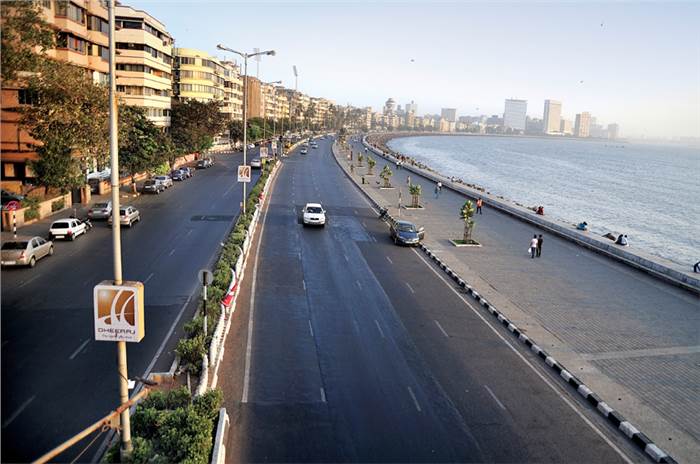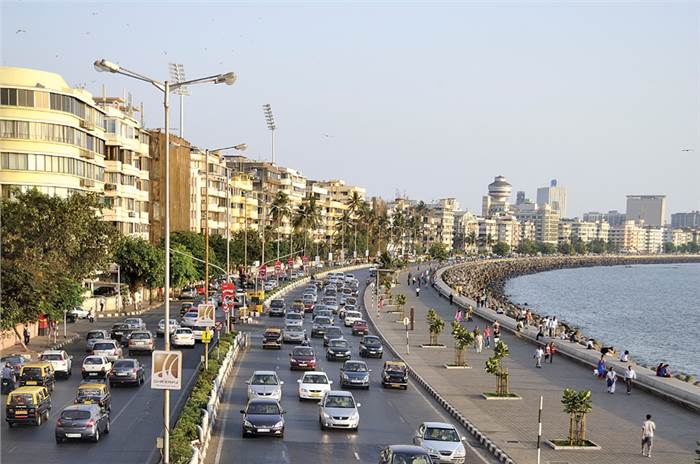How an India vs Pakistan World Cup match affects traffic
Cricket is the solution to our traffic problems. While the whole of India was glued to a TV during the 2011 India-Pakistan World Cup semi-final, we enjoyed a cruise down deserted Mumbai streets.
Published On Jun 15, 2019 07:00:00 AM
23,272 Views
Follow us onCricket, more than anything else, has the power to bring India to a grinding halt. And when you have arch rivals like India and Pakistan taking on each other, there’s simply no taking your eyes off that TV. That’s just what happened on March 30 when Dhoni’s daredevils took on Afridi’s avengers in the ICC World Cup 2011. Like the rest of the country, we too have cricket running through our veins but the prospect of driving on splendidly traffic-less roads was too good to resist. Pedal to metal and no snarls whatsoever – motoring as it should be.
The fact of the matter is that distances in Mumbai aren’t really a big deal. It’s the daily traffic that bogs down drivers, making even a 5km trip seem like an endless expedition. So just how significant is the correlation between traffic and travel time? And what does cricket have to do with it?
March 30 — Match Day
We set out from office in our Maruti SX4, after India’s challenging score of 260. As openers Kamran Akmal and Mohammed Hafeez stride into Wankhede Stadium, we too strap up and set out for Nariman Point. It’s 6pm, the dreaded rush-hour for all motorists on a normal day in Mumbai. But today is a completely different scenario. Imagine Will Smith in ‘I Am Legend’. Ok, perhaps not as dramatic but eerily close to it. We’re one of the very few cars on the road, and those apart from us are, in all probability, rushing to get home.

For Juhu, we take the Marine Drive-Pedder Road-Haji Ali-Worli Sea Face-Sea Link-Bandra Station-Linking Road route. First up is the usually populated Marine Drive which now feels like a three-lane expressway. Even Kemps Corner, traffic’s favourite child, is empty. Within minutes, we’re zipping on to the Bandra-Worli Sea Link. We encounter a little, almost negligible, traffic near Bandra Station. We are cruising coolly but the boost is up on the radio, courtesy some good swing bowling by Zaheer and Nehra. Juhu beach, our destination, is unsurprisingly desolate.
Mission over, it’s all eyes on the GPS. The 28 kilometres from Nariman Point to Juhu have taken only 47 minutes! Scarcely believable but astonishingly true. Cricket has proved to be a great leveller but it’s time to turn back home and join the rest of India cheering the modern-day gladiators.
March 31 — Doosra Day

Twenty-four hours after the Indo-Pak ‘battle’ began, we take the SX4 out again to chart the same 28km route. Wish it were yesterday once more but it’s real-world Mumbai now. Nariman Point to Peddar Road takes nine minutes more, and feels like it’s actually making up for the lost traffic yesterday. Excruciatingly slow-moving cars ahead of us dog us down and literally inching forwards, we reach Haji Ali at 6.50pm, 31 minutes more than our breezy run on match day. Annie Besant Road is a little crowded, but not harrowingly so, and once we get on to the Sea Link, Bandra greets us quite quickly. But the greeting’s shortlived and the usual traffic bottleneck near Bandra Station is enough to elicit profanities. Once past the queen of the suburbs, we finally, but exhaustedly, reach Juhu and the beach which, unlike yesterday, is a sea of people still celebrating India’s victory. The entire journey takes us an hour and 34 minutes, exactly twice as much as match day.

Fuel for thought
The next time you’re stuck in a traffic jam, don’t curse the driver ahead. Or make philosophical statements like ‘We need to change the system’. Instead, pray. Pray that there are more such matches in the future. But then again, unless you’re us, you’ll be at home glued to the telly. So there’s no getting away from the traffic really. Just learn to take the good with the bad. And happily, for the month of May, enjoy the IPL which, like the ICC World Cup 2011, is all about India.

DISCLAIMER: This article was originally published in the May 2011 issue of Autocar India.
Copyright (c) Autocar India. All rights reserved.







Comments
Member Login
Personal Details
No comments yet. Be the first to comment.